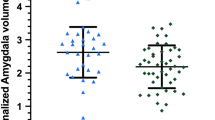Abstract
101 patients with multiple sclerosis (MS) (53 definite, 22 probable, 8 possible and 18 suspected according to the McDonald and Halliday criteria) were investigated by magnetic resonance imaging (MRI), to evaluate its diagnostic sensitivity compared to other diagnostic parameters such as cerebrospinal fluid (CSF) findings and auditory brainstem responses (ABR). In addition, correlations between severity of lesions on MRI and clinical data (disability duration of the disease and progression rate) and CSF immunoglobulin abnormalities were evaluated. MRI detected multiple demyelinating lesions in 96% of definite, 77% of probable, 50% of possible and 56% of suspected MS. In the same groups CSF was positive for oligoclonal banding in 85%, 68%, 50% and 37% and ABR in 82%, 50%, 80% and 28% respectively. Severity of MRI was found to correlate with disability and duration of the disease, but not with progression rate. The presence of CSF oligoclonal bands and a raised and IgG index were usually associated with more extensive white matter involvement as evaluated by MRI.
Sommario
101 Pazienti affetti da Sclerosi Multipla (SM) (53 definiti, 22 probabili, 8 possibili e 18 sospetti secondo i criteri diagnostici di McDonald e Halliday) sono stati studiati con Risonanza Magnetica Nucleare (RMN) allo scopo di valutarne la sensibilità diagnostica in confronto ad altre metodiche diagnostiche quali l'esame del liquor cerebrospinale e lo studio dei potenziali evocati uditivi (ABR).
Sono state inoltre valutate le correlazioni tra gravità degli aspetti RMN e parametri clinici (durata, grado di invalidità e tasso di progressione della malattia), e alterazioni delle immunoglobuline liquorali.
Aree multiple di demielinizzazione venivano rilevate alla RMN nel 96% delle S.M. definite, nel 77% delle probabili, nel 50% delle possibili e nel 56% delle sospette.
Negli stessi gruppi di pazienti l'esame del liquor cerebrospinale risultava positivo per la presenza di bande oligoclonali nell'85%, 68%, 50%, 80% e 28% rispettivamente.
La gravità del quadro RMN si correla alla disabilità ed alla durata della malattia, ma non con il tasso di progressione. Le alterazioni delle immunoglobuline liquorali (presenza di bande oligoclonai o elevazione dell'indice IgG) è associata ad una maggiore estensione delle lesioni della sostanza bianca rilevate alla RMN.
Similar content being viewed by others
References
Chiappa K.H.:Pattern-shift visual, brainstem auditory and short-latency somatosensory evoked potentials in multiple sclerosis. Ann N. Y. Ac Sci 436: 315–327, 1984.
Chu A.B., Sever J.L., Madden D.L., et al:Oligoclonal IgG bands in cerebrospinal fluid in various neurological diseases. Ann Neurol 13:434–439, 1983.
Viñuela F.V., Fox A.J., Debrun G.M., Feasby T.E., Ebers G.C.:New perspectives incomputed tomography of multiple sclerosis. AJNR 3:277–281, 1982.
Ebers G.C., Viñuela F.V., Feasby T., Bass B.:Multifocal CT enhancement in MS. Neurology 34: 341–346, 1984.
Savoiardo M., Bracchi M., Visciani A., Milanese C., Uziel G.:Radiology of demyelinating diseases and other disorders of the white matter. In: Aarli JA, Behan WMH, Behan PO, Eds. Clinical Neuroimmunology. Oxford: Blackwell, 467–484, 1987.
Young I.R., Hall A.S., Pallis C.A., Legg N.J., Bydder G.M., Steiner R.E.:Nuclear magnetic resonance imaging of the brain in multiple sclerosis. Lancet 2:1063–1066, 1981.
Young I.R., Randell C.P., Kaplan P.W., James A., Bydder G.M., Steiner R.E.:Nuclear magnetic resonance (NMR) imaging in white matter disease of the brain using spin-echo sequences. JCAT 7: 290–294, 1983.
Lukes S.A., Crooks L.E., Aminoff M.J. et al:Nuclear magnetic resonance imaging in multiple sclerosis. Ann. Neurol. 13:592–601, 1983.
Runge V.M., Price A.C., Kirshner H.S., Allen J.H., Partain C.L., James A.E. Jr:Magnetic resonance imaging in multiple sclerosis. A study of pulse-technique efficacy. AJR 143:1015–1026, 1984.
Kirshner H.S., Tsai S.I., Runge V.M., Price A.C.:Magnetic resonance imaging and other techniques in the diagnosis of multiple sclerosis. Arch. Neurol. 42:859–863, 1985.
Sheldon J.J., Siddharthan R., Tobias J., Sheremata W.A., Soila K., Viamonte M. Jr:MR imaging of multiple sclerosis: comparison with clinical and CT examinations in 74 patients. AJNR 6:683–690, 1985.
Stevens J.C., Farlow M.R., Edwards M.K., Yu P.:Magnetic resonance imaging. Clinical correlation in 64 patients with multiple sclerosis. Arch. Neurol. 43:1145–1148, 1986.
McDonald W.I., Halliday A.M.:Diagnosis and classification of multiple sclerosis. Brit. Med. Bull 33:4–9, 1977.
Kurtzke J.F.:Rating neurologic impairment in multiple sclerosis: an expanded disability status scale (EDSS). Neurology 33:1444–1452, 1983.
Kostulas V.K., Link H.:Agarose isoelectric focusing of unconcentrated CSF and radioimmunofixation for detection of oligoclonal bands in patients with multiple sclerosis and other neurological diseases. J. Neurol. Sci 54:117–127, 1982.
Gebarski S.S., Gabrielsen T.O., Gilman S., Knake J.E., Latack J.T., Aisen A.M.:The initial diagnosis of multiple sclerosis: clinical impact of magnetic resonance imaging. Ann. Neurol. 17: 469–474, 1985.
Ormerod I., Bronstein A., Rudge P. et al:Magnetic resonance imaging in clinically isolated lesions of the brainstem. J. Neurol. Neurosurg Psychiatry 49:737–743, 1986.
Jackson J.A., Leake D.R., Schneider N.J. et al:Magnetic resonance imaging in multiple sclerosis: results in 32 cases. AJNR 6:171–176, 1985.
Grossman R.I., Gonzales-Scarano F., Atlas S.W., Galetta S., Silberberg D.H.:Multiple sclerosis: gadolinium enhancement in MR imaging. Radiology 161:721–725, 1986.
Atlas S.W., Grossman R.I., Goldberg H.I., Hackney D.B., Bilaniuk L.T., Zimmerman R.A.:MR diagnosis of acute disseminated encephalomyelitis. JCAT 10:798–801, 1986.
Lumsden C.E.:The neuropathology of multiple sclerosis. In: Vinken P.J., Bruyn G.W., Eds. Handbook of clinical neurology. Vol. 9. New York: American Elsevier, 1970:217–309.
Gilbert J.J., Sadler M.:Unsuspected multiple sclerosis. Arch. Neurol. 40:533–536, 1983.
Lyon-Caen O., Jouvent R., Hauser S. et al:Cognitive function in recent-onset demyelinating diseases. Arch. Neurol 43:1138–1141, 1986.
Author information
Authors and Affiliations
Rights and permissions
About this article
Cite this article
Milanese, C., Savoiardo, M., La Mantia, L. et al. Magnetic resonance imaging in multiple sclerosis: Diagnostic value and clinical correlations. Ital J Neuro Sci 9, 127–134 (1988). https://doi.org/10.1007/BF02337458
Published:
Issue Date:
DOI: https://doi.org/10.1007/BF02337458




